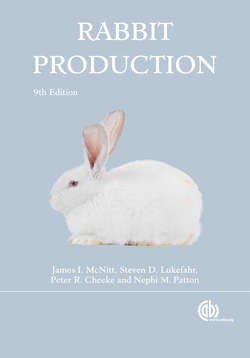Читать книгу Rabbit Production - James I McNitt - Страница 64
На сайте Литреса книга снята с продажи.
Determination of Sex
ОглавлениеThe sex of the young rabbits may be determined accurately a day or two following kindling. Sexing at that time is necessary when one sex may be needed to supply a market for either does or bucks for breeding purposes, when rabbits are being produced for laboratory work, or when Angora bucks are to be kept as “woollers,” in order that any surplus to be disposed of will be the undesired sex.
The external organs of both sexes of the newborn rabbits have very similar appearances, and a special technique is required for identification of sex at an early age. To prevent the continual wiggling of the little rabbit, restrain it firmly but gently. Place it on its back in the palm of your hand, with its head extended toward the heel of the hand. Use the index finger to press the tail back and down. Press down on the sexual organs gently but with enough pressure to expose the reddish mucous membrane that, in the case of the buck, can be made to protrude sufficiently to form a circle; in the case of the doe, it will protrude and form a slit that will have a slight depression at the end next to the anus. In addition, the distance between the penis and the anus is greater than the distance between the vulva and the anus.
Until the technique of sexing rabbits has been perfected (Fig. 5.14), it may be a good plan to sex the young at weaning and then practice with several at about three weeks of age. In the older rabbits, the vulva will have a definite slit appearance. The penis will develop a more tubular appearance. This will make it easier to determine the sex of the three-week-old rabbit. Constant irritation of the tender parts may be detrimental, so sexing should not be practiced on the same rabbit at short intervals.
Fig. 5.14. External genitalia of the male (upper) and female (lower) rabbit. (Courtesy of D.J. Harris)
